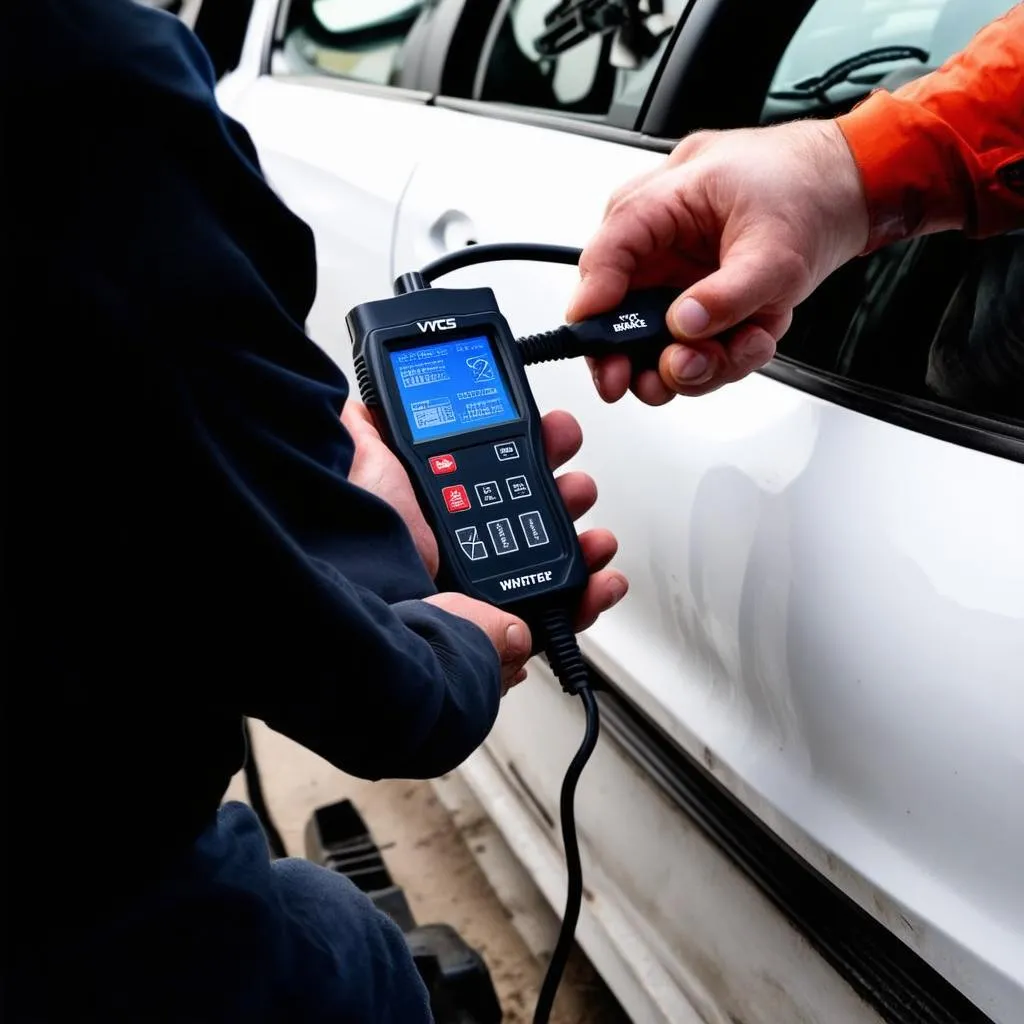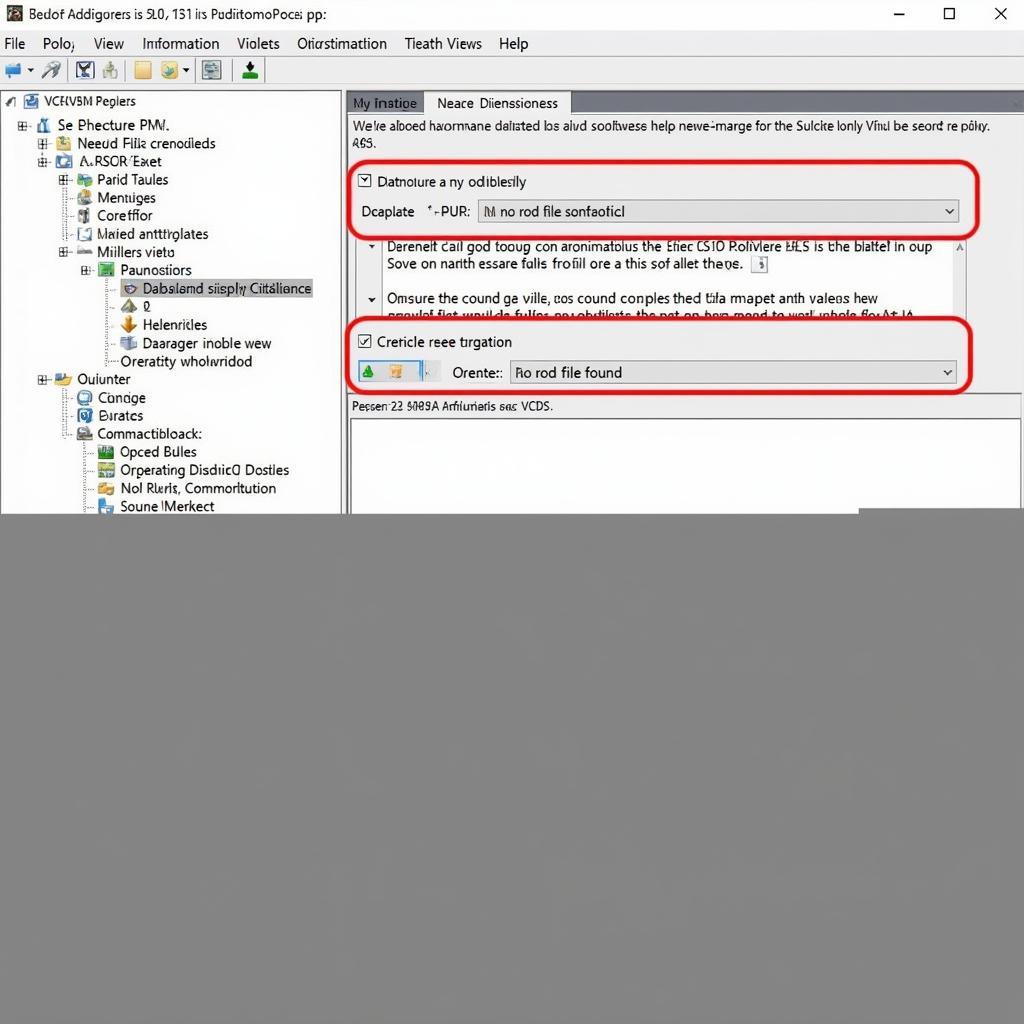VCDS, the versatile diagnostic software from Ross-Tech, is a powerful tool for Volkswagen, Audi, Seat, and Skoda vehicles. But can VCDS program used modules? This is a common question amongst both DIY enthusiasts and professional mechanics. Let’s delve into the capabilities of VCDS and explore its module programming functionalities.
For those new to the world of automotive diagnostics, understanding the role of modules is crucial. These electronic control units (ECUs) govern various systems within your vehicle, from the engine and transmission to the airbags and entertainment system. Each module contains software that dictates its operation, and sometimes, these modules require reprogramming or coding. This can be due to a variety of reasons, such as replacing a faulty module, adding new features, or adapting a used module to your vehicle.
So, can VCDS program used modules? The answer is nuanced. VCDS excels at coding and adapting modules, especially when transferring a used module to a new vehicle. This process involves matching the module’s coding to the specific features and options of your car. For instance, if you’re installing a used convenience module, VCDS can help you configure it to work with your car’s central locking, power windows, and other related systems. However, VCDS’s capabilities are primarily focused on coding and adaptation, not full-fledged flashing or reprogramming of the module’s core firmware.
What’s the difference between coding and flashing? Coding typically involves adjusting parameters within the existing software of the module. Think of it as tweaking settings to personalize the module’s behavior. Flashing, on the other hand, involves completely replacing the module’s software with a new version. This is often required for software updates, bug fixes, or adding entirely new functionalities. While VCDS can perform some basic firmware updates, particularly for older modules, it’s not designed for comprehensive flashing like dedicated dealer-level tools.
Why is this distinction important? If you’re trying to install a used module, coding with VCDS is often sufficient. The module already contains the necessary software, and you’re simply adapting it to your car’s specific configuration. However, if the module requires a firmware update to address a known issue or enable a new feature, VCDS might not be enough. In such cases, you might need to consult a dealer or a specialist equipped with the necessary flashing tools. You can check out our page on vcds vw for more information specific to Volkswagen vehicles.
Can VCDS Update Module Firmware?
While primarily a diagnostic and coding tool, VCDS can perform some firmware updates. However, these capabilities are limited. VCDS is generally capable of updating older modules or applying minor patches, but it might not support the latest firmware versions for newer modules. This is because manufacturers often restrict access to their latest firmware updates to their own dealer-level tools. If you’re unsure about whether VCDS can update your specific module, it’s always best to check the Ross-Tech website or contact their support team. For those looking to purchase a VCDS system, check out ross tech vcds for sale.
How to Program a Used Module with VCDS?
Programming a used module with VCDS involves several steps, and the specific procedure might vary depending on the module and vehicle. Generally, you’ll need to connect your VCDS interface to the vehicle’s OBD-II port, identify the module in the software, and access the coding or adaptation functions. VCDS provides detailed instructions and documentation to guide you through the process.
When Should You Consult a Professional?
While VCDS empowers DIYers to perform various tasks, there are situations where consulting a professional is recommended. If you’re encountering complex issues, unsure about the correct coding procedure, or dealing with a module that requires flashing beyond the capabilities of VCDS, it’s best to seek expert assistance. Understanding when to ask for help is crucial for avoiding potential damage or further complications. For specific information on the HEX-V2 interface, visit our page on vcds hex 2.
In conclusion, VCDS is a valuable tool for coding and adapting used modules, but it’s essential to understand its limitations regarding full firmware flashing. While it can handle some basic firmware updates, it might not be suitable for all modules or the latest software versions. By understanding the distinction between coding and flashing, you can effectively utilize VCDS for various tasks while knowing when to seek professional assistance for more complex procedures. If you are looking for a VCDS system, you can visit our vw vcds for sale page.
FAQ
-
Can VCDS program all used modules? No, VCDS primarily focuses on coding and adaptation, not full firmware flashing.
-
What’s the difference between coding and flashing? Coding adjusts existing parameters, while flashing replaces the module’s entire software.
-
Can VCDS update module firmware? It can perform some firmware updates, especially for older modules, but might not support the latest versions.
-
Where can I find more information about VCDS? The Ross-Tech website provides comprehensive documentation and support.
-
When should I consult a professional? For complex issues, uncertainty about coding procedures, or modules requiring flashing beyond VCDS’s capabilities.
-
What is VCDS EOL mode? You can learn more about that on our vcds eol mode page.
Need help with your car diagnostics? Contact us via Whatsapp: +1 (641) 206-8880, Email: [email protected] or visit us at 276 Reock St, City of Orange, NJ 07050, United States. We offer 24/7 customer support.



